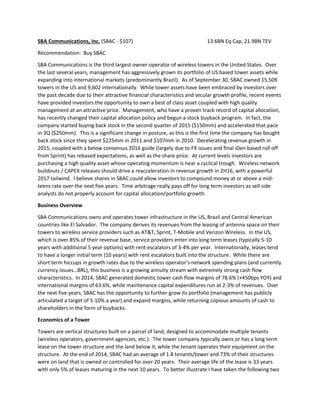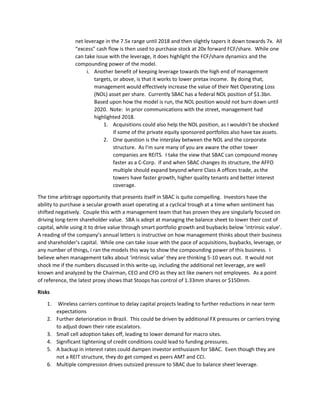SBA Communications is recommended as a buy. It is the third largest owner of wireless towers in the US and has been growing its portfolio internationally, particularly in Brazil. Recent events have provided an opportunity to invest in a best-in-class asset at an attractive price. Management has changed its capital allocation policy and begun a stock buyback program. The company's operating momentum is near a cyclical trough, and wireless network buildouts should drive revenue growth in the second half of 2016 and 2017. The analyst believes the shares could allow long-term investors to compound money at a mid-teens rate over five years.










